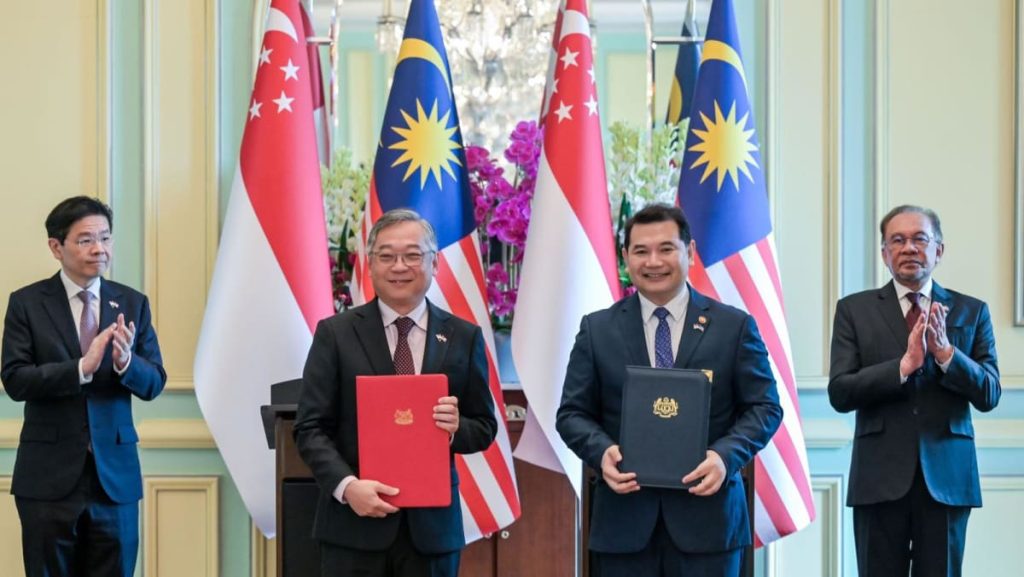The Iskandar Regional Development Authority (IRDA) and the Malaysian Investment Development Authority (MIDA) have unveiled ambitious plans for the Johor-Singapore Special Economic Zone (JS-SEZ), a sprawling 3,571 square kilometer economic corridor poised to reshape the economic landscape of the region. This groundbreaking initiative, jointly spearheaded by Malaysia and Singapore, aims to leverage the synergistic strengths of both nations to create a highly competitive and attractive investment destination. The JS-SEZ represents a unique model of cross-border collaboration, fostering deeper economic integration between the two countries and setting a precedent for regional cooperation within ASEAN.
The JS-SEZ is more than just a geographical zone; it represents a paradigm shift in economic cooperation. Rather than viewing Johor and Singapore as separate entities, the initiative encourages a holistic perspective, recognizing the interconnectedness and complementarity of their respective strengths. This integrated approach seeks to harness the combined resources, infrastructure, and talent pool of both nations to create a dynamic ecosystem that offers a compelling value proposition for global investors. The vision is to attract multinational corporations, foster innovation, and drive sustainable economic growth, not just for Johor and Singapore, but for the entire region.
One of the key pillars of the JS-SEZ strategy is the emphasis on attracting foreign direct investment (FDI) through a comprehensive package of incentives. Recognizing the crucial role of FDI in driving economic growth and job creation, Malaysia is offering a range of attractive fiscal incentives to incentivize investment in the JS-SEZ. These include a special corporate tax rate for companies engaging in high-growth and high-value-added activities, further sweetening the deal for potential investors. Additionally, a special personal income tax rate will be introduced to attract top talent and bolster the skilled workforce within the zone. These incentives aim to create a conducive investment environment that encourages businesses to establish operations within the JS-SEZ, ultimately contributing to the economic prosperity of the region.
The JS-SEZ is strategically designed to encompass nine distinct flagship zones, each catering to specific economic sectors. This targeted approach allows for focused development and specialization, maximizing the potential of each sector and promoting synergistic growth. These flagship zones are expected to house a diverse range of industries, from advanced manufacturing and logistics to tourism and digital services. This diversification strategy aims to create a robust and resilient economic landscape capable of weathering global economic fluctuations and ensuring long-term sustainable growth. The carefully planned layout of the JS-SEZ will optimize resource allocation and facilitate efficient connectivity between different zones, fostering collaboration and driving innovation.
The JS-SEZ is not just about attracting Singaporean businesses to Johor; it is about fostering a mutually beneficial partnership between the two countries to attract global investment. This collaborative approach seeks to leverage the complementary strengths of both nations to create a more attractive and competitive business environment. Singapore’s advanced infrastructure, skilled workforce, and strong financial ecosystem combined with Johor’s strategic location, abundant land resources, and lower operating costs create a compelling proposition for international businesses. This synergy is expected to attract a diverse range of industries, further diversifying the economic base of the region and creating new opportunities for growth and development.
The JS-SEZ stands as a testament to the strong bilateral ties between Malaysia and Singapore, showcasing the potential for regional economic integration through collaborative partnerships. This groundbreaking initiative sets a precedent for other nations within ASEAN, demonstrating the benefits of pooling resources and working together to create a more dynamic and competitive economic landscape. By leveraging the complementary strengths of its member states, ASEAN can unlock greater economic potential and drive sustainable growth across the region. The JS-SEZ serves as a model for future cross-border collaborations, paving the way for a more integrated and prosperous Southeast Asia.

